The role of supercritical CO2 in gas well health issue – liquid loading
Bashirul Haq A D , Fahad Shehiwin B , Dhafer Al Shehri A , Jishan Liu C , Nasiru Muhammed A , Emad Mohammad A , Jafar Al Hamad A , Ammar Al-Ramadhan A , Abdulsamed Iddris A and Assad Barri AA Department of Petroleum Engineering, King Fahd University of Petroleum & Minerals, Dhahran 31261, Saudi Arabia.
B Saudi Aramco, PO Box 5000, Dhahran 31311, Saudi Arabia.
C School of Chemical Engineering, University of Western Australia, 35 Stirling Highway, Perth, WA 6009, Australia.
D Corresponding author. Email: bhaq@kfupm.edu.sa
The APPEA Journal 60(1) 143-154 https://doi.org/10.1071/AJ19200
Submitted: 7 January 2020 Accepted: 23 March 2020 Published: 15 May 2020
Abstract
Liquid load or condensate banking is a common well health issue in gas/gas-condensate reservoirs that decreases well productivity by a factor of two to four. Due to the depletion of bottom-hole pressure, the produced liquid accumulates around the wellbore and creates a static column of liquid that reduces gas production until well production ceases. Enhancing gas recovery by CO2 injection is a promising technology because it reduces greenhouse gas emissions and improves CO2 storage. More investigation needs to be conducted to understand the role of supercritical CO2 (SCCO2) in minimising liquid loading. The aim of this research is to examine the impact of SCCO2 in surface tension, condensate viscosity and well productivity. This study consists of simulation and laboratory experiments. Eclipse 300 was used to develop a model that examines the effect of SCCO2 injection on reducing liquid loading issues by varying the well parameters. We found that injecting SCCO2 improved the microscopic displacement efficiency and minimised liquid loading by decreasing the condensate viscosity and the surface tension. The model shows that (1) condensate recovery increases when the injection rate increases up to a limit after which there is no change of production and (2) condensate recovery improves with decreasing production rate.
Keywords: enhanced gas recovery, EGR, liquid loading, SCCO2.
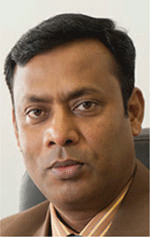
Bashirul Haq is currently working as an Assistant Professor in the Department of Petroleum Engineering at King Fahd University of Petroleum and Minerals (KFUPM) in Saudi Arabia and has 15 years of experience in research, teaching, consultancy and testing in reservoir, production and drilling engineering. Haq received a PhD in Petroleum Engineering from The University of Western Australia (UWA) and an MSc in Petroleum Engineering. Bashir rendered consulting services to Chevron, Helix RDS, Unocal and Bangladesh Oil, Gas and Mineral Corporation (Petrobangla) and worked at the UWA, CSIRO and Curtin University. He is a member of Engineers Australia and SPE. |
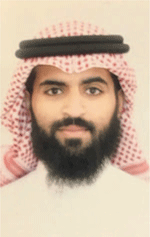
Fahad Shehiwin is a Petroleum Engineer at Saudi Aramco. Fahad graduated from KFUPM with a BS in Petroleum Engineering in 2019. Fahad is a member of SPE. |
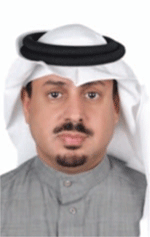
Dr Dhafer Al-Shehri has more than thirty years of oil and gas industry and academic experience. Currently, he is the Chairman of the Department of Petroleum Engineering and a faculty member within the College of Petroleum Engineering and Geosciences at KFUPM, Dhahran, Saudi Arabia. He also worked for Saudi Aramco from 1996 to 2014. He assumed leading technical and management positions with upstream operations, engineering and research capacities. Dhafer received BS and MS degrees from KFUPM and a PhD from Texas A&M university. His experience includes drilling, production, reservoir management and applied research. He is an active member of SPE and has served in many committees, including chairing the SPE Technical Symposium. He has authored may conference and journal papers and was a key note speaker at several SPE workshops. He is also a member of several professional societies. |
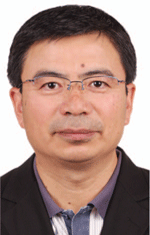
Jishan Liu is a Professor at UWA. His primary research interests include gas-rock interactions with applications to coal seam gas extraction, shale gas extraction, coal mine safety and CO2 sequestration in coal seam. |

Nasiru Salahu Muhammed is a PhD student currently working on naturally derived nanoparticles for green enhanced oil recovery under the supervision of Bashirul Haq: an Assistant Professor in the Department of Petroleum Engineering at KFUPM. He received his BEng in Chemical Engineering from the Federal University of Technology Minna, Nigeria, and an MSc in Petroleum Geosciences and Petroleum Engineering from the University of Port Harcourt, Nigeria, and Heriot Watt University, Edinburgh (UK), respectively. He is an SPE member. |
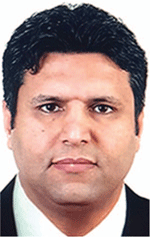
Emad Mohammad has worked as both a Petroleum Engineer and Programmer for the past 10 years, and during his career he has enhanced his understanding of the fully integrated asset models and how to operate the field in an optimum way. Working for Saudi Aramco, which is the biggest operating oil company, and Schlumberger, which is the biggest services company, gave him the opportunity to deal with high standard professionals and enriched his knowledge of dealing with the industry’s latest technologies. |
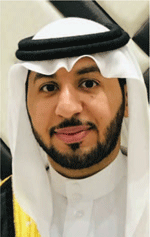
Jafar Al Hamad holds a bachelor’s degree in Petroleum Engineering from KFUPM. He is currently working as a Laboratory Engineer in the Department of Petroleum Engineering at KFUPM across two laboratories: quantitative and core flooding analysis. Jafar is specialised in IFT and contact angel, gas chromatography, gas hydrate, microscopic flooding, core and gas flooding measurements. |
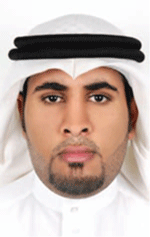
In 2011, Ammar Al-Ramadhan graduated from KFUPM with BS in Petroleum Engineering. He has diverse work experience from sales to academic and oil field (2016–2018). From 2012 to 2015, Amar was a Drilling Fluid Engineer/Mud Engineer with MB Petroleum Services, and from 2012 to 2016 he was a Petroleum Engineering Trainer/Instructor with the Petroleum and Natural Gas Institute of Technology and Training. In 2011, Amar was a Sales Engineer with Arif Al-Saeed Advanced Technology Corp, where he provided analytical and educational instruments as well as equipment to university laboratories. |
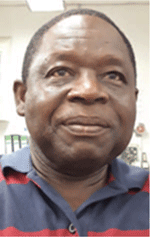
Mr. Abdulsamed Iddris holds a BSc degree at KFUPM and received his post-graduate professional training (mud, cement and drilling and workover engineering) in the USA and Canada. He has over 25 years’ experience in Petroleum Fluids Properties (PVT) Laboratory, Reservoir Rock Properties Laboratory and Drilling Fluids and Cementing Laboratories, both in teaching and research. Over the years he has helped devise a simple, unique and successful technique (in the teaching laboratories) to produce high quality and successful engineers. |

Assad Barri received a BSc in Petroleum Engineering from Khartoum University, Sudan, in 2003. He has worked as a Senior Well Testing Engineer in White Nile Petroleum Operating Co., Sudan, from 2004 to 2012. He completed a MS in Petroleum Engineering from KFUPM, Saudi Arabia, from 2012 to 2015. Since 2015, he has been working in the Department of Petroleum Engineering at KFUPM as a Technical Researcher and Lecture. |
References
Afidick, D., Kaczorowski, N. J., and Bette, S. (1994). Production Performance of a Retrograde Gas Reservoir: A Case Study of the Arun Field. In ‘SPE Asia Pacific Oil and Gas Conference, Melbourne, Australia, 7–10 November.’ (Society of Petroleum Engineers.)Ahmed, M., Al-Qahtani, M. Y., and Zillur, R. (2002). Quantifying Production Impairment Due To Near-Wellbore Condensate Dropout and Non-Darcy Flow Effects in Carbonate and Sandstone Reservoirs With and Without Hydraulic Fractures in the Ghawar Field, Saudi Arabia. In ‘SPE Annual Technical Conference and Exhibition, San Antonio, Texas, 29 September–2 October.’ (Society of Petroleum Engineers.)
Al-Abri, A. S., and Amin, R. (2009a). Enhanced Natural Gas and Condensate Recovery by Injection of Pure SCCO2, Pure CH4 and their Mixtures: Experimental Investigation. In ‘SPE Annual Technical Conference and Exhibition, New Orleans, Louisiana, 4–7 October.’ (Society of Petroleum Engineers.)
Al-Abri, A. S., and Amin, R. (2009b). Experimental Investigation of Interfacial Interactions of Condensate/Brine/SC-CO2 Systems at High Pressure and High Temperature Conditions. In ‘International Petroleum Technology Conference, Doha, Qatar, 7–9 December.’ (International Petroleum Technology Conference.)
Asar, H., and Handy, L. L. (1988). Influence of Interfacial Tension on Gas/Oil Relative Permeability in a Gas-Condensate System. SPE Reservoir Engineering 3, 257–264.
| Influence of Interfacial Tension on Gas/Oil Relative Permeability in a Gas-Condensate System.Crossref | GoogleScholarGoogle Scholar |
Craft, B. C., and Hawkins, M. (2015). ‘Applied Petroleum Reservoir Engineering’. 3rd Edition. (Pearson Education Inc: London, UK.)
Fan, I., Harris, B., Jamaluddin, A., Kamath, J., Mott, R., and Whitson, C. (2005). Understanding Gas Condensate Reservoirs. Oilfield Review 17, 14–27.
Finney, B, and Jacobs, M. (2005) Phase diagram of carbon dioxide. Available at https://commons.wikimedia.org/wiki/File:Carbon_dioxide_pressure-temperature_phase_diagram.svg [verified 22 April]
Fussell, D. D. (1973). Single-Well Performance Predictions for Gas condensate reservoirs. SPE Journal of Petroleum Technology 25, 860–870.
| Single-Well Performance Predictions for Gas condensate reservoirs.Crossref | GoogleScholarGoogle Scholar |
Green, D. W., and Willhite, G. P. (1998). ‘Enhanced Oil Recovery’. SPE Textbook Series Vol. 6. (Society of Petroleum Engineers)
Haq, B., Liu, J., Liu, K., Malaki, I., and Al-Shehri, D. (2019). Modification of Eclipse Simulator for Microbial Enhanced Oil Recovery. Journal of Petroleum Exploration and Production Technology 9, 2247–2261.
| Modification of Eclipse Simulator for Microbial Enhanced Oil Recovery.Crossref | GoogleScholarGoogle Scholar |
Kurdi, M., Xiao, J., and Liu, J. (2012). Impact of CO2 Injection on Condensate Banking in Gas Condensate Reservoirs. In ‘SPE Saudi Arabia section Young Professionals Technical Symposium, Dhahran, Saudi Arabia, 19–21 March.’ (Society of Petroleum Engineers.)
Sanger, P. J., and Hagoort, J. (1998). Recovery of gas-condensate by nitrogen injection compared with methane injection. SPE Journal 3, 26–33.
| Recovery of gas-condensate by nitrogen injection compared with methane injection.Crossref | GoogleScholarGoogle Scholar |
Wiebe, R., and Gaddy, V. L. (1940). The Solubility of Carbon Dioxide in Water at Various Temperatures from 12 to 40° and at Pressures to 500 Atmospheres. Critical Phenomena. Journal of the American Chemical Society 62, 815–817.
| The Solubility of Carbon Dioxide in Water at Various Temperatures from 12 to 40° and at Pressures to 500 Atmospheres. Critical Phenomena.Crossref | GoogleScholarGoogle Scholar |
Xiao, J. J., and Al-Muraikhi, A. J. (2004). A New Method for the Determination of Gas Condensate Well Production Performance. In ‘SPE Annual Technical Conference and Exhibition, Houston, Texas, 26–29 September.’ (Society of Petroleum Engineers.)
Zillur, R., Bartko, K., and Al-Qahtani, M. Y. (2002). Hydraulic Fracturing Case Histories in the Carbonate and Sandstone Reservoirs of Khuff and Pre-Khuff Formations, Ghawar Field, Saudi Arabia. In ‘SPE Annual Technical Conference and Exhibition, San Antonio, Texas, 29 September–2 October.’ (Society of Petroleum Engineers.)


